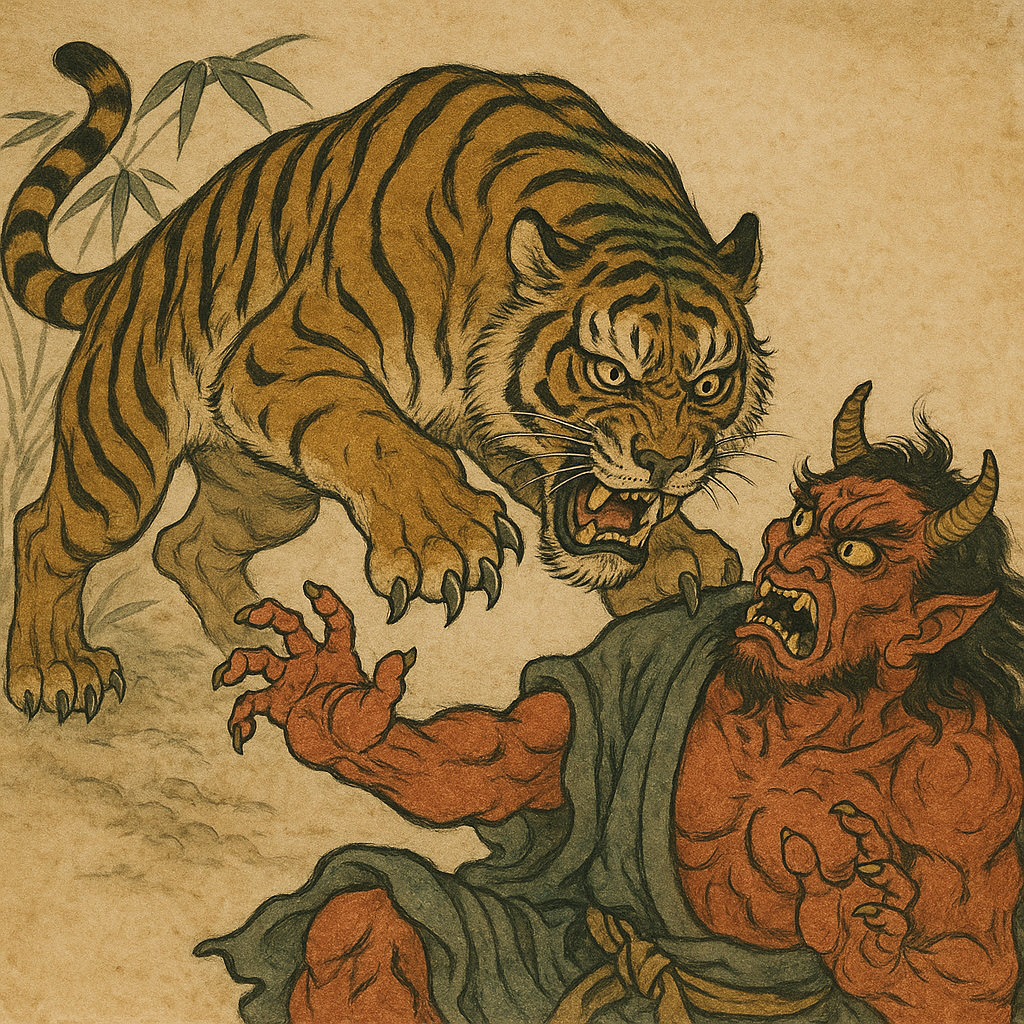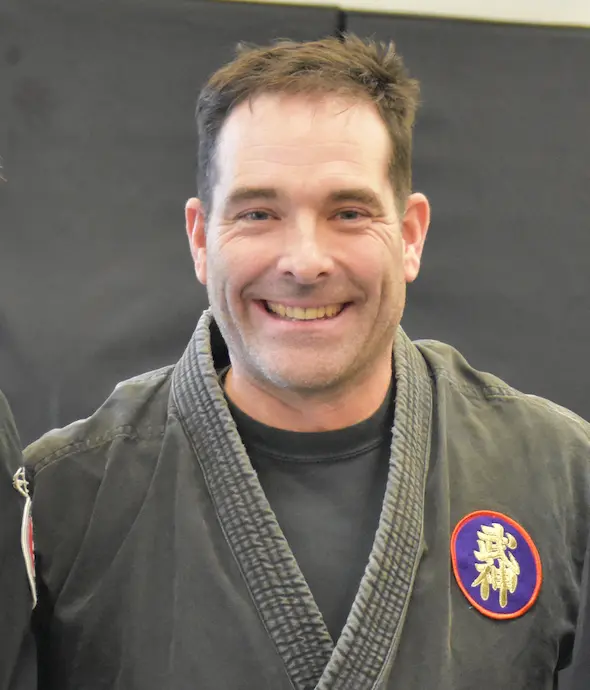Among the classical Japanese martial schools (koryū) preserved within the Bujinkan, Gyokko Ryū Kosshijutsu stands as one of the most influential. The school of the Jeweled Tiger (or Jade Tiger) is featured prominently in the Nidan-level training of Ninja Training TV (NTTV). This ancient system of combat continues to shape the way Bujinkan practitioners move, strike, and think today.
Let’s examine three essential aspects of this storied Ryū:
- Who founded Gyokko Ryū?
- What are its defining characteristics?
- And what has it contributed to the broader Bujinkan system?
Who Founded Gyokko Ryū?
The origins of Gyokko Ryū date back over a thousand years to the Tang Dynasty of China (618–907 AD). Historical scrolls (densho) and oral traditions preserved within the Bujinkan describe a lineage of esoteric warrior-monks who helped plant the roots of what would become Gyokko Ryū in Japan.
Key historical figures include:
- Ikai (異匿) – Also known as Cho Busho, a mysterious figure likely of foreign origin who fled war-torn China and brought martial and spiritual teachings to Japan.
- Yo Gyokko (姚玉虎) – Said to be the founder of Shitōjutsu (“finger-tip techniques”) and one of the early transmitters of what became Gyokko Ryū.
- Gamon Doshi, Garyu Doshi, Hachiryū Nyūdō – Practitioners believed to have refined the system’s methods while transmitting esoteric Buddhist (Mikkyo) principles alongside martial tactics.
- Tozawa Hakuunsai – The recognized founder of Gyokko Ryū in Japan, who codified the teachings passed down from the earlier Chinese figures.
The lineage passed through Momochi Sandayū, the Toda family, and ultimately to Takamatsu Toshitsugu, who taught Masaaki Hatsumi, the 28th Sōke. Hatsumi later passed the Ryū to Ishizuka Tetsuji, who served as 29th Sōke until his passing in 2025.
Characteristics of Gyokko Ryū
Gyokko Ryū is classified as a kosshijutsu school, meaning it specializes in striking muscles, tendons, and vital points (kyūsho) to disable or unbalance the opponent. It emphasizes softness over stiffness, evasion over collision, and precision over power.
Key Characteristics:
- Kosshijutsu Striking – Using fingertips, thumbs (boshiken), and claws (shakōken) to attack nerves and weak points.
- Natural Evasion (Tai Sabaki) – Utilizing angled movement, timing, and posture to avoid direct force.
- Posture-Based Tactics (Kamae) – Especially Ichimonji no Kamae, Hicho no Kamae, and Jumonji no Kamae, each offering unique strategic applications.
- Scroll Structure – The kata of Gyokko Ryū are organized into:
- Jo Ryaku no Maki (Upper Strategy Scroll)
- Chū Ryaku no Maki (Middle Strategy Scroll)
- Ge Ryaku no Maki (Lower Strategy Scroll)
Kata in NTTV Nidan Curriculum:
- Jo Ryaku no Maki: Koku, Renyo, Dakki, Saka Nagare, Ukenagashi
- Chū Ryaku no Maki: Ketatamashi, Ka no Nagare, Gyaku Nagare, Hō Soku
- Ge Ryaku no Maki: Shunsoku, Daishin, Hanetsurube
Each kata teaches principles of balance disruption, distance control (maai), and vital-point targeting within fluid motion.
Gyokko Ryū also preserves spiritual practices like Ten Ryaku Uchu Gasshō, a symbolic mudra joining Heaven and Earth, often used to begin training with mindfulness and intent.
Contributions to Bujinkan Budo Taijutsu
While Gyokko Ryū is one of nine schools within the Bujinkan, its influence is unmatched in certain foundational areas. In fact, many of the “universal” Bujinkan techniques can be traced directly back to this Ryū.
1. Kihon Happō – The Eight Fundamental Techniques
The Kihon Happō (“Eight Basic Techniques”) are rooted in Gyokko Ryū’s joint reversals and posture-based entries. These techniques form the core training matrix for all Bujinkan taijutsu, and include:
- Omote Gyaku (outward wrist reversal)
- Ura Gyaku (inward wrist reversal)
- Musha Dori (warrior’s capture)
- Ganseki Nage (rock throw)
- Plus foundational kamae like Ichimonji, Hicho, and Jumonji no Kamae
While these are now taught across all Bujinkan ryūha, their structure, flow, and logic come from Gyokko Ryū.
2. Sanshin no Kata – The Five Elemental Forms
The Sanshin forms (Earth, Water, Fire, Wind, Void) teach elemental strategies through body movement. Though these are not part of the classical Gyokko scrolls, their spiritual and tactical DNA aligns closely with Gyokko Ryū’s kosshijutsu and philosophical roots.
3. Strategic Movement & Distance Control
Gyokko Ryū introduced the use of lateral movement (yoko aruki), off-angle entry, and precise maai. This has shaped how Bujinkan practitioners:
- Avoid incoming strikes
- Enter and control space
- Apply technique without brute force
These concepts have directly influenced movement in Koto Ryū, Gyokushin Ryū, and even Togakure Ryū.
Why Gyokko Ryū Matters
Training Gyokko Ryū is like returning to the original source code of the Bujinkan system. Whether you’re executing a subtle joint lock or delivering a pinpoint atemi (strike), chances are you’re using Gyokko mechanics.
And while technique lists and kata names provide structure, the real value lies in what these movements teach us about timing, connection, and the nervous system, which are elements that elevate taijutsu beyond martial arts into true budō.
As with all classical schools (koryū), Gyokko Ryū must be felt in the body, not just read in texts. So if you’re training toward Nidan or reviewing the foundations, spend time with this jewel of a school.


